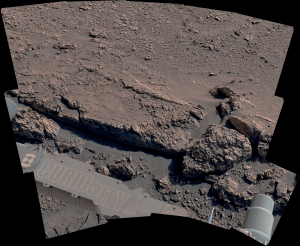Cassini Significant Event Report
For Week Ending 07/20/01
The most recent spacecraft telemetry was acquired from the Goldstone
tracking station on Monday, July 16. The Cassini spacecraft is in an
excellent state of health and is operating normally. Information on the
spacecraft's position and speed can be viewed on the
"Present Position"
web page.
Recent spacecraft activities include a clearing of the Attitude and
Articulation Control Subsystem (AACS) Highwater Marks, a Magnetospheric
Imaging Instrument (MIMI) Low Energy Magnetospheric Measurement Subsystem
(LEMMS) sensor power cycle, and a Radio Frequency Subsystem (RFS) static
phase error test. The Reaction Wheel Assembly (RWA) system was unloaded
and powered off, and the spacecraft switched to Reaction Control Subsystem
(RCS) control as planned. As part of a Periodic Instrument Maintenance
activity, the Radio Science Subsystem (RSS) team executed a High Gain
Antenna (HGA) boresight calibration and Ultra Stable Oscillator (USO)
characterization. The Radio and Plasma Wave Science (RPWS) instrument
performed a High Frequency Receiver (HFR) calibration, and the Ultraviolet
Imaging Spectrometer (UVIS) performed two interplanetary hydrogen surveys.
The Imaging Science Subsystem (ISS) successfully executed its first
observations of Saturn along with some star calibrations, and the Visual
and Infrared Mapping Spectrometer (VIMS) performed a Pleiades observation.
The Instrument Operations/Multimission Image Processing Laboratory
(IO/MIPL) team created and delivered 362 ISS image products of Saturn and
stars. The main body of Saturn is about 40 pixels across in the Narrow
Angle Camera (NAC) image, and about 90 pixels across when Saturn's rings
are included. Titan is also visible and was calculated to be 1.6 pixels
across. For comparison, if the NAC were viewing Saturn from Earth, the
main body would be about 16 pixels across. Additionally, IO/MIPL created
and delivered 220 VIMS cube products of stars.
The Huygens Mission Recovery Task Force (HRTF) held its eighth meeting at
the European Space Research & Technology Centre in Noordwijk, Holland. The
agenda for this last meeting was to prepare the final report and to
consolidate follow-on actions for the JPL and European Space Agency (ESA)
teams which will implement the new Huygens mission.
The Attitude Control Flight Software Development team delivered version
A8.3.2 of the AACS Flight Software (FSW) to the Integrated Test Lab (ITL)
for further testing. This is the second point build for A8.3, which is the
FSW build the Spacecraft Operations Office (SCO) is using for critical
sequence development.
The VIMS team delivered version 4.1 FSW to the Project Software Library.
An ITL test of the newly delivered flight software was conducted to
produce data to validate the new MIPL ground software that will process
data generated by the FSW. Analysis of the data processing is underway.
An in-depth Critical Design Review (CDR) of Cassini Tour Downlink
Operations Concepts was held as the first in a series of reviews to
present Cassini readiness for Tour. Additionally, a dry-run presentation
was held in preparation for the next CDR, which will review the Cassini
Ground Data System.
System Engineering and MSSO personnel worked with the Cassini Information
Management System (CIMS) developers to identify several new procedures to
increase user access capabilities to the CIMS Web Server.
A kaleidoscopic movie made from about 1,200 Jupiter images taken by
Cassini revealed unexpectedly persistent polar weather patterns on the
giant planet, and was featured on the CNN website.
Additional information about Cassini-Huygens is online at http://saturn.jpl.nasa.gov.
Cassini will begin orbiting Saturn on July 1, 2004, and release its piggybacked Huygens probe about six months later for descent through the thick atmosphere of the moon Titan. Cassini-Huygens is a cooperative mission of NASA, the European Space Agency and the Italian Space Agency. JPL, a division of the California Institute of Technology in Pasadena, manages the mission for NASA's Office of Space Science, Washington, D.C.
Media Relations Office
Jet Propulsion Laboratory
California Institute of
Technology
National Aeronautics and Space
Administration
Pasadena, Calif. 91109.
Telephone (818) 354-5011






























